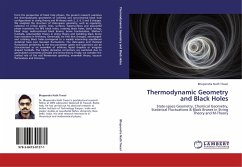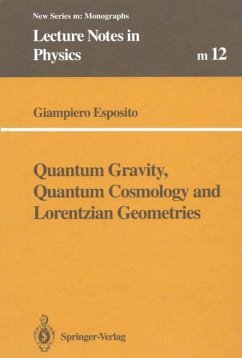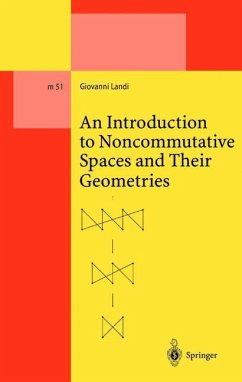
Fundamentals of Thermodynamic Geometries
Black Brane Attractors, Calabi-Yau Moduli, Higher Derivative Corrections, Sen Entropy Function & AdS/CFT Correspondence
Versandkostenfrei!
Versandfertig in 6-10 Tagen
39,99 €
inkl. MwSt.

PAYBACK Punkte
20 °P sammeln!
From the perspective of black hole thermodynamics, this exposition provides the physical and mathematical account of thermodynamic geometries, higher derivative corrections, N= 1, 2, 4 configurations, Calabi-Yau compactification, string theory and M-theory. We illustrate the local and global statistical stabilities and phase transitions for an ensemble of Kerr black holes in general relativity, and thereby consider a class of macroscopic attractors, including (non)BPS black holes, (non)extremal black holes, and (non)supersymmetric black holes in supergravity theories. For a given black brane e...
From the perspective of black hole thermodynamics, this exposition provides the physical and mathematical account of thermodynamic geometries, higher derivative corrections, N= 1, 2, 4 configurations, Calabi-Yau compactification, string theory and M-theory. We illustrate the local and global statistical stabilities and phase transitions for an ensemble of Kerr black holes in general relativity, and thereby consider a class of macroscopic attractors, including (non)BPS black holes, (non)extremal black holes, and (non)supersymmetric black holes in supergravity theories. For a given black brane ensemble, we shed light on the limiting thermodynamic fluctuations and higher order effects by considering Sen entropy function method as a generalized attractor and its quantum counterparts via the AdS/CFT correspondence. This research gives string (field) theory and M-theory fundamentals for the state-space, chemical, Legendre transformed and short distance (quasi) geometries. From the perspective of black hole thermodynamics, (un)attractors and an ensemble of microscopic vacua, we discuss the (in)stability of black brane configurations in conformal field theory, string theory and M-theory.












